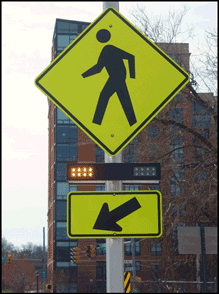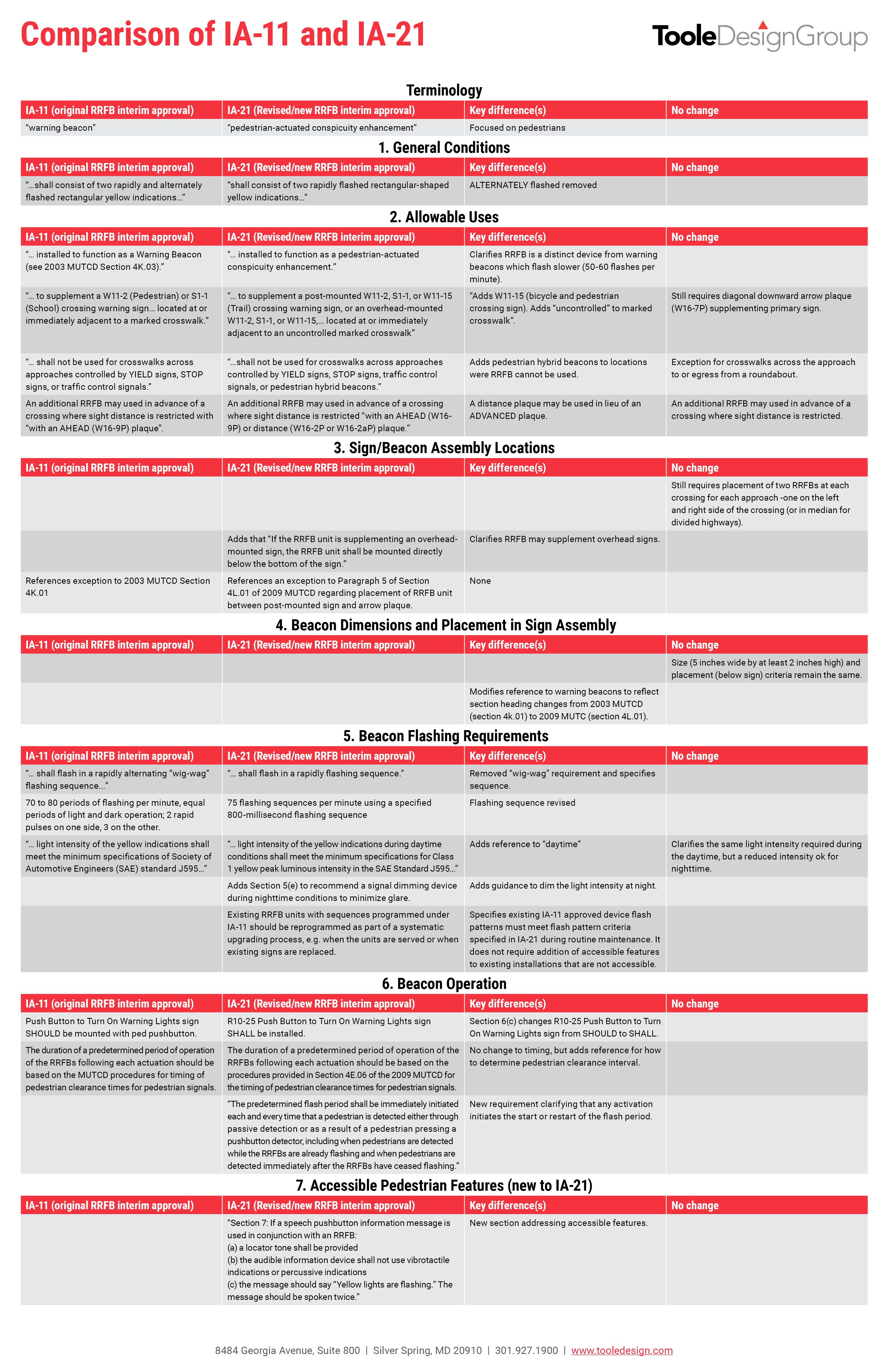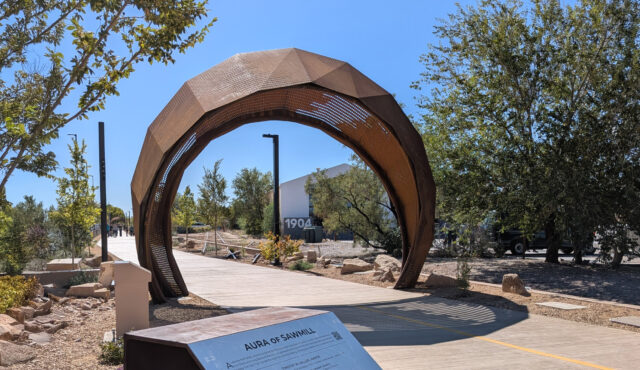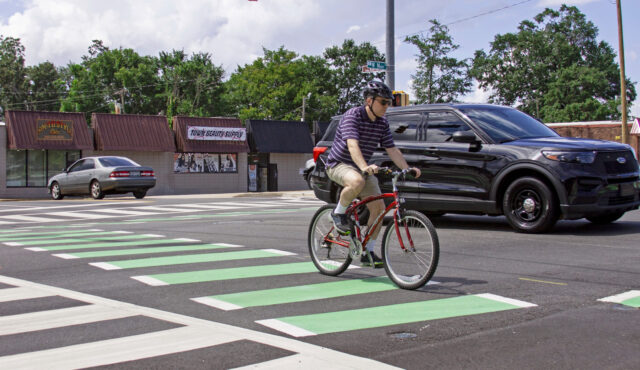In December 2017, FHWA terminated the Rectangular Rapid Flashing Beacon (RRFB), due to a patent dispute. With almost 6,000 people on foot killed in traffic crashes in 2017, the RRFB had become a desirable safety tool because it is relatively easy to install, is cost-effective, and has a proven ability to increase motorist yielding rates across a wide variety of roadway contexts.
On March 20th, FHWA delivered the news that the patent dispute has been settled thanks to the generous intervention of traffic control device manufacturer Carmanah allowing its production by all manufacturers. This led the Federal Highway Administration to issue Interim Approval (IA-21).
It is important to understand that IA-11 remains terminated, and agencies who wish to install RRFBs must submit a new request to FHWA and follow the terms of IA-21.

The new interim approval includes a number of modifications to the RRFB’s design and operation, stemming from new research and operational experience gained since IA-11 was issued. While the look and function of the device generally remains the same, agencies and practitioners should be aware of several significant design and operational differences in the new interim approval.
(Image Credits: FHWA. Animation Credit: Jeremy Chrzan, PE, PTOE)
Moving forward:
- The RRFB can be used with the ped/bike sign (W11-15) as well as overhead mounted W11-2, S1-1, and W11-15 signs
- It must include accessible pedestrian actuation features
- The flash rate must follow a prescribed flash pattern of a steady 75 flashes per second
- The brightness may be dimmed at night
- A R10-25 Push Button to Turn On Warning Lights sign must be installed with the RRFB
Existing RRFBs issued under IA-11 may continue operation for the remainder of their service lifespans. However, when servicing existing units, they should be reprogrammed to flash per the guidance in IA-21. When units are replaced, they should meet the guidance of IA-21 and provide the necessary accessible pedestrian actuation features. For a complete analysis of the changes from IA-11 to IA-21, TDG staff have developed the chart below:
For further information on IA-21, RRFBs, or general questions about safe pedestrian design and engineering, please contact a TDG staff member from the list below.
|
Bill Schultheiss, P.E. |
Sagar Onta, P.E., PTOE |
|
Jeremy Chrzan, P.E., PTOE |
Kenneth Loen, P.E. |
|
Jason DeGray, P.E., PTOE |
Rob Burchfield, P.E. |
|
Blake Loudermilk, P.E. |
Brooke Dubose, AICP |
|
Kristin “KC” Atkins, P.E. |
Additional resources



